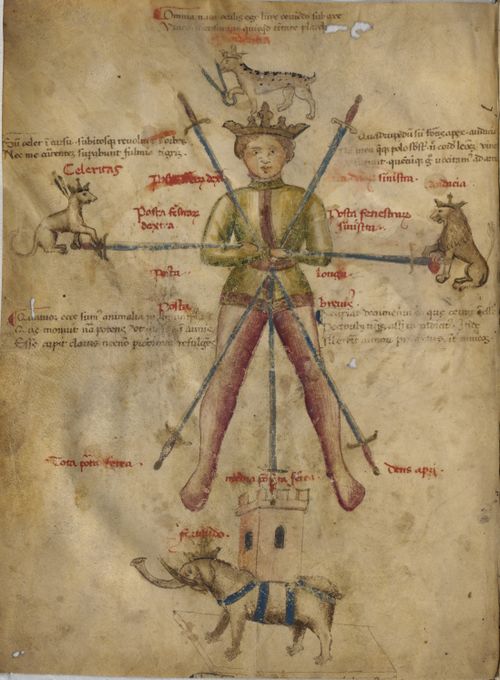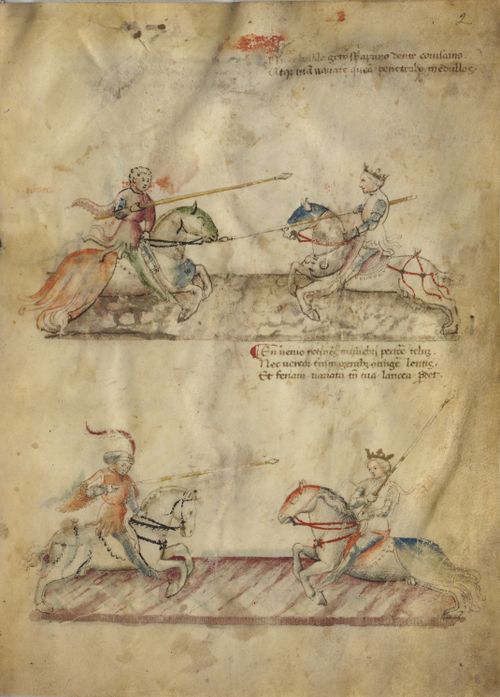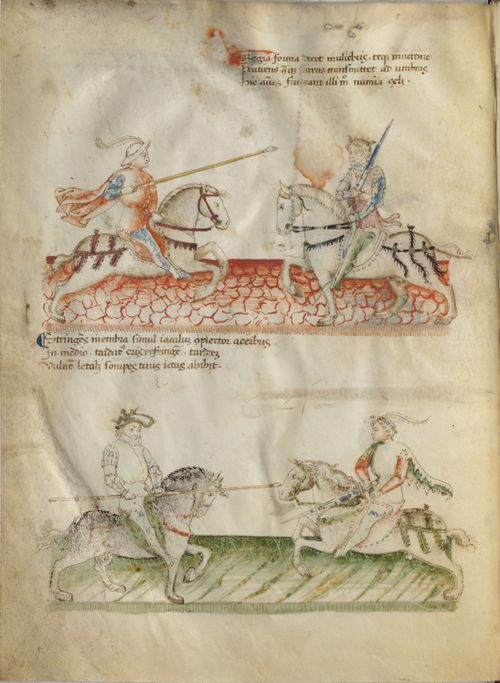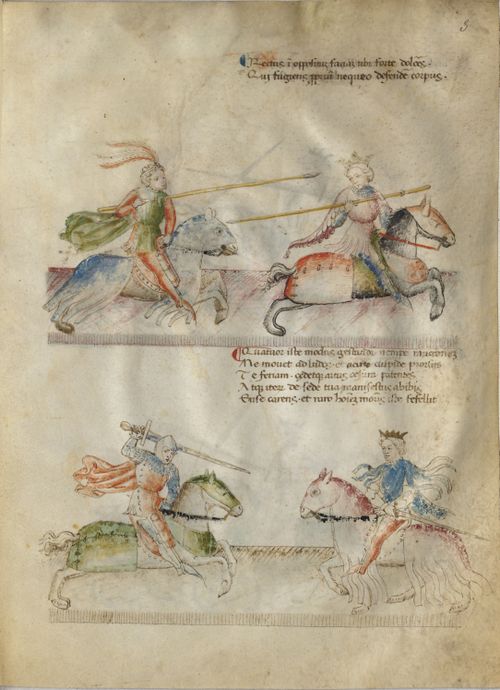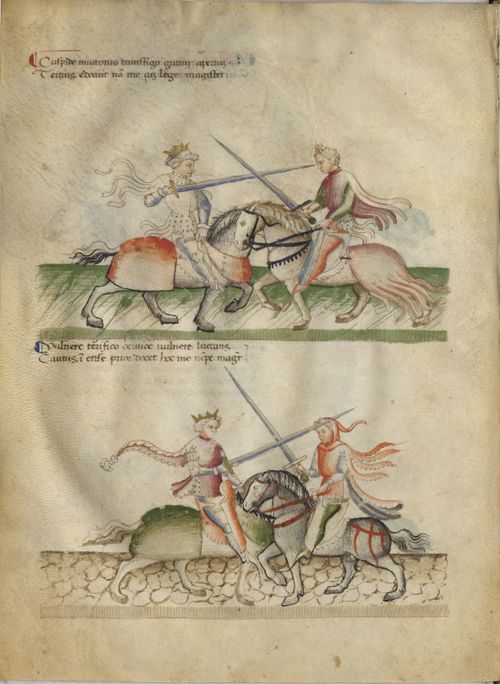|
|
You are not currently logged in. Are you accessing the unsecure (http) portal? Click here to switch to the secure portal. |
Difference between revisions of "User:Kendra Brown/Florius/Side by side"
< User:Kendra Brown | Florius
Jump to navigation
Jump to search
Kendra Brown (talk | contribs) |
Kendra Brown (talk | contribs) |
||
| Line 1: | Line 1: | ||
==1v== | ==1v== | ||
| − | <div style="display:flex;width:80%;justify-content: | + | <div style="display:flex; width:80%; justify-content: flex-start; margin:2em;"> |
| − | <div width="550px">[[File:MS Latin 11269 1v.jpg|500px]]</div> | + | <div width="550px" style="padding:2em; margin:2em;">[[File:MS Latin 11269 1v.jpg|500px]]</div> |
| − | <div width="550px" style="text-align:left;">{{#lsth:Page:MS Latin 11269 1v.jpg}}</div> | + | <div width="550px" style="text-align:left;padding:2em; margin:2em;">{{#lsth:Page:MS Latin 11269 1v.jpg}}</div> |
| − | <div width="550px" style="text-align:left;"> English goes here </div> | + | <div width="550px" style="text-align:left;padding:2em; margin:2em;"> English goes here </div> |
</div> | </div> | ||
==2r== | ==2r== | ||
| − | <div style="display:flex;width:80%;justify-content: | + | <div style="display:flex; width:80%; justify-content:flex-start; margin:2em;> |
| − | <div width="550px">[[File:MS Latin 11269 2r.jpg|500px]]</div> | + | <div width="550px" style="padding:2em; margin:2em;">[[File:MS Latin 11269 2r.jpg|500px]]</div> |
| − | <div width="550px" style="text-align:left;">{{#lsth:Page:MS Latin 11269 2r.jpg}}</div> | + | <div width="550px" style="text-align:left;padding:2em; margin:2em;">{{#lsth:Page:MS Latin 11269 2r.jpg}}</div> |
| − | <div width="550px" style="text-align:left;"> English goes here </div> | + | <div width="550px" style="text-align:left;padding:2em; margin:2em;"> English goes here </div> |
</div> | </div> | ||
==2v== | ==2v== | ||
| − | <div style="display:flex;width:80%;justify-content: | + | <div style="display:flex;width:80%;justify-content: flex-start;margin:2em;> |
| − | <div width="550px">[[File:MS Latin 11269 2v.jpg|500px]]</div> | + | <div width="550px" style="padding:2em; margin:2em;">[[File:MS Latin 11269 2v.jpg|500px]]</div> |
| − | <div width="550px" style="text-align:left;">{{#lsth:Page:MS Latin 11269 2v.jpg}}</div> | + | <div width="550px" style="text-align:left; padding:2em; margin:2em;">{{#lsth:Page:MS Latin 11269 2v.jpg}}</div> |
| − | <div width="550px"> English goes here </div> | + | <div width="550px" style="text-align:left; padding:2em; margin:2em;"> English goes here </div> |
</div> | </div> | ||
==3r== | ==3r== | ||
| − | <div style="display:flex;width:80%;justify-content: | + | <div style="display:flex;width:80%;justify-content: flex-start; margin:2em;> |
| − | <div width="550px">[[File:MS Latin 11269 3r.jpg|500px]]</div> | + | <div width="550px" style="padding:2em; margin:2em;">[[File:MS Latin 11269 3r.jpg|500px]]</div> |
| − | <div width="550px" style="text-align:left;">{{#lsth:Page:MS Latin 11269 3r.jpg}}</div> | + | <div width="550px" style="text-align:left;padding:2em; margin:2em;">{{#lsth:Page:MS Latin 11269 3r.jpg}}</div> |
| − | <div width="550px" style="text-align:left;"> English goes here </div> | + | <div width="550px" style="text-align:left;padding:2em; margin:2em;"> English goes here </div> |
</div> | </div> | ||
==3v== | ==3v== | ||
| − | <div style="display:flex;width:80%;justify-content: | + | <div style="display:flex;width:80%;justify-content: flex-start;margin:2em;> |
| − | <div width="550px">[[File:MS Latin 11269 3v.jpg|500px]]</div> | + | <div width="550px" style="padding:2em; margin:2em;">[[File:MS Latin 11269 3v.jpg|500px]]</div> |
| − | <div width="550px" style="text-align:left;">{{#lsth:Page:MS Latin 11269 3v.jpg}}</div> | + | <div width="550px" style="text-align:left;padding:2em; margin:2em;">{{#lsth:Page:MS Latin 11269 3v.jpg}}</div> |
| − | <div width="550px" style="text-align:left;"> English goes here </div> | + | <div width="550px" style="text-align:left;padding:2em; margin:2em;"> English goes here </div> |
</div> | </div> | ||
Revision as of 20:01, 23 August 2022
Contents
1v
¶ Omnia nata oculis ego linx cernendo sub axe
Vinco mensurans quicquid tentare placeb[ ] Prudentia ¶ Sum celer in cursu subitosque revolv[am][1] in orbes
Nec me currentem superabunt fulmia[2] tigrim. Celeritas Quadrupedum sum fortis apex, audacia
Natura[3] mea quoque polo subsunt. nunc[4] cordis leonem ||[5] vincit
[et superavit][6] quemcumque ergo vocitamus ad arma Audacia
Quae monuit nam potens Potuit[8] [...] in armis
Esse cupit clarus necnon probitate refulgens ¶ Accipiat [documenta] sibi(?) / quae cernit o(?)esse
Pectoribus [nullus] affixe indicitus. Inde
Ille erit [armorum] pr(?) [doc]tus inter amicos.
Posta Dominarum Sinistra
Vinco mensurans quicquid tentare placeb[ ] Prudentia ¶ Sum celer in cursu subitosque revolv[am][1] in orbes
Nec me currentem superabunt fulmia[2] tigrim. Celeritas Quadrupedum sum fortis apex, audacia
Natura[3] mea quoque polo subsunt. nunc[4] cordis leonem ||[5] vincit
[et superavit][6] quemcumque ergo vocitamus ad arma Audacia
Quae monuit nam potens Potuit[8] [...] in armis
Esse cupit clarus necnon probitate refulgens ¶ Accipiat [documenta] sibi(?) / quae cernit o(?)esse
Pectoribus [nullus] affixe indicitus. Inde
Ille erit [armorum] pr(?) [doc]tus inter amicos.
[below doctus: …et (hand M?)]
[around the master, in red:]
Posta Dominarum Sinistra
Posta fenestrarum dextra
Posta fenestrarum sinistra
Posta longa
Posta brevis
Tota porta ferea
Media porta ferrea
dens apri
English goes here
2r
- ¶ En venio retinens muliebrj pectore telum.
Nec vereor terram genibus contingere lentis.
Et feriam variata tamen tua lancea praedet.
English goes here
2v
- ¶ Regia forma decet muliebris. teque mucrone[12]
Percutiens contra que furens transmittet ad umbras
Hic animus / faveant illi modo numina caeli.
In medio. tardatus eris refringere[14] tandem
Vulnere letali sonipes[15] tuus ictus abibit.
English goes here
3r
English goes here
3v
¶ Cuspide mucronis transfigo guttur apertum
Tertius edocuit nam me cum lege magister.
Cautus in ense prior docet hoc me nempe magister.
Tertius edocuit nam me cum lege magister.
Cautus in ense prior docet hoc me nempe magister.
English goes here
4r
- ¶ Tu pudibundus obhoc ensem vel forte relinques
Vel prostratus humi nullo prohibente iacebis.
Quidque velim de te potero tentare deinde.
English goes here
4v
- ¶ Protego[20] cesura me nunc / ac cuspide forti.
Et capulo[21] faciem ferio / ne prensus hic ensis
Sit mihi / sim terram nec adhuc proiectus ad imam.
Cuius clune / mei pectus fremitando sedebit.
Quadrupedis nec linquo tui resonantia frena[23] /
Donec humum praeceps limosam vertice tangas.
Ista quidem armato valet optima captio / postquam
Ledere non armis ullum sibi posse pavescit
English goes here
5r
- ¶ Te galea[24] prensum teneo / qui terga revolvis.
In terram post te currendo pectore mittam.
Est opus . hoc faciunt contraria gesta . malignus
Tu tamen illud idem mihimet tentare cupisti.
English goes here
5v
- ¶ Crure simul stafile levans / te vertet ad imum
Hec mea dextra potens. nec erit quae molliat artus.[26]
Qui modo per terram frustra conatis[28] inermem[29]
Spargere[30] tentabas. sed te contraria vincunt .
English goes here
6r
- ¶ Si me rolandus[31] peditem pulicanus[32] et asper
Fraxinea[33] peterent hasta spectando morarer /[34]
Dextraque vel iaculum teneat vel turbida clavam[35].
Atque repercussis feriam furibundior[36] hastis./
Quamprimum hoc actu retraham capita alta prementum.
- ¶ Nunc secat ista tuum caput amplo vulnere mestum
Lancea. meque movet tumidi[37] cautela magistri.
English goes here
6v
English goes here
7r
English goes here
8v
English goes here
8r
English goes here
8v
English goes here
9r
English goes here
9v
English goes here
10r
English goes here
10v
English goes here
11r
English goes here
11v
English goes here
12r
English goes here
12v
English goes here
13r
English goes here
13v
English goes here
14r
English goes here
1v
English goes here
2r
English goes here
- ↑ The final letters are obliterated; the likeliest candidates are "am" or "or"; we felt the reading with "am" resulted in a better translation overall.
- ↑ This word does not appear in any dictionary. It must be a misspelling of some word related to lightning such as fulmen or a conjugation of fulminare.
- ↑ This was previously read as "Nam"
- ↑ This abbreviation can also be read "nec."
- ↑ This punctuation mark is not used elsewhere in the text, and its meaning is not known. It could be a tie-mark indicating a word written in the margin and labeled with this punctuation should be inserted here.
- ↑ These words are not visible in standard photography; this reading is based on ultraviolet imaging.
- ↑ Only the first and final letters of this word can be read with confidence.
- ↑ This word begins with a symbol that doesn't appear elsewhere; this reading is speculative.
- ↑ The bottom of the page, including the elephant verse, has been cut off.
- ↑ The second line has been over-written to darken worn-away letters. If there were annotations, they have not survived.
- ↑ This pair of verses has a bracket at the end, which has been posited as indicating enjambment of the lines by Mondschein. As there is clearly a period at the end of the first line, this cannot be the case here.
- ↑ Added later: "de la pointe".
- ↑ Added later: "remoror [!] jaculum".
- ↑ The translator appears to be using 'stringere-refringere' as a pair, as both words are associated with defending and attacking fortified gates, for rhetorical effect; however, English doesn't have a good oppositional pair that also conveys the meanings of the words.
- ↑ Added later: "eqqus". Probably meant to be “equus”, but the two q’s are fairly clear.
- ↑ Added later: "ego".
- ↑ This word was obliterated somehow (“et” and “cesura” both show uncorrected damage) but has been written over by a later hand in similarly-colored ink. Further, someone has tried to write something above it, perhaps a French equivalent—the superscript is unreadable, but the second word, above cuspide, appears to end in “te” and could be “pointe”. The superscript above “acute” may have been in the D1 or F hand, but not enough is clear. There may have been a superscript above mucronem that was erased, although the remaining strokes look like they may have suffered the same damage as the rest of the page. None of the superscripts are clear enough to certainly identify the hands.
- ↑ A bracket, similar to the enjambment bracket, hangs off the last line.
- ↑ There is an erasure above “cervice”, but we were not able to discern any letters.
- ↑ Added later: "te juc g???et".
- ↑ Added later: "de la poignee".
- ↑ Added later: "eqquus".
- ↑ Added later: "cert mords de bride".
- ↑ There is an erased note here with multiple words, but the letters are not very clear. One speculated reading of the second word is "heaume."
- ↑ This abbreviation can also mean "modo"
- ↑ To the right of the verse are a bracket, a +, and some erased words. The binding did not open wide enough to reveal these with ultraviolet photography.
- ↑ Added later: "pro tui".
- ↑ This can also be read "conatus"
- ↑ Added later: "scilicet".
- ↑ This separation between the initial letter and remainder of the first word of the line is inconsistent with the rest of the text.
- ↑ Added later: "nomen properum".
- ↑ Added later: "nomen properum".
- ↑ Added later: "de fresne".
- ↑ To the right, a multi-line note has been removed.
- ↑ Added later: "matreque?".
- ↑ There was a multi-word note here.
- ↑ Black light reveals there used to be a note here. The thing that looks like : is all that remains.
- ↑ The final letters are obliterated; the likeliest candidates are "am" or "or"; we felt the reading with "am" resulted in a better translation overall.
- ↑ This word does not appear in any dictionary. It must be a misspelling of some word related to lightning such as fulmen or a conjugation of fulminare.
- ↑ This was previously read as "Nam"
- ↑ This abbreviation can also be read "nec."
- ↑ This punctuation mark is not used elsewhere in the text, and its meaning is not known. It could be a tie-mark indicating a word written in the margin and labeled with this punctuation should be inserted here.
- ↑ These words are not visible in standard photography; this reading is based on ultraviolet imaging.
- ↑ Only the first and final letters of this word can be read with confidence.
- ↑ This word begins with a symbol that doesn't appear elsewhere; this reading is speculative.
- ↑ The bottom of the page, including the elephant verse, has been cut off.
- ↑ The second line has been over-written to darken worn-away letters. If there were annotations, they have not survived.
- ↑ This pair of verses has a bracket at the end, which has been posited as indicating enjambment of the lines by Mondschein. As there is clearly a period at the end of the first line, this cannot be the case here.
- ↑ The final letters are obliterated; the likeliest candidates are "am" or "or"; we felt the reading with "am" resulted in a better translation overall.
- ↑ This word does not appear in any dictionary. It must be a misspelling of some word related to lightning such as fulmen or a conjugation of fulminare.
- ↑ This was previously read as "Nam"
- ↑ This abbreviation can also be read "nec."
- ↑ This punctuation mark is not used elsewhere in the text, and its meaning is not known. It could be a tie-mark indicating a word written in the margin and labeled with this punctuation should be inserted here.
- ↑ These words are not visible in standard photography; this reading is based on ultraviolet imaging.
- ↑ Only the first and final letters of this word can be read with confidence.
- ↑ This word begins with a symbol that doesn't appear elsewhere; this reading is speculative.
- ↑ The bottom of the page, including the elephant verse, has been cut off.
- ↑ The second line has been over-written to darken worn-away letters. If there were annotations, they have not survived.
- ↑ This pair of verses has a bracket at the end, which has been posited as indicating enjambment of the lines by Mondschein. As there is clearly a period at the end of the first line, this cannot be the case here.
- ↑ The final letters are obliterated; the likeliest candidates are "am" or "or"; we felt the reading with "am" resulted in a better translation overall.
- ↑ This word does not appear in any dictionary. It must be a misspelling of some word related to lightning such as fulmen or a conjugation of fulminare.
- ↑ This was previously read as "Nam"
- ↑ This abbreviation can also be read "nec."
- ↑ This punctuation mark is not used elsewhere in the text, and its meaning is not known. It could be a tie-mark indicating a word written in the margin and labeled with this punctuation should be inserted here.
- ↑ These words are not visible in standard photography; this reading is based on ultraviolet imaging.
- ↑ Only the first and final letters of this word can be read with confidence.
- ↑ This word begins with a symbol that doesn't appear elsewhere; this reading is speculative.
- ↑ The bottom of the page, including the elephant verse, has been cut off.
- ↑ The second line has been over-written to darken worn-away letters. If there were annotations, they have not survived.
- ↑ This pair of verses has a bracket at the end, which has been posited as indicating enjambment of the lines by Mondschein. As there is clearly a period at the end of the first line, this cannot be the case here.
- ↑ The final letters are obliterated; the likeliest candidates are "am" or "or"; we felt the reading with "am" resulted in a better translation overall.
- ↑ This word does not appear in any dictionary. It must be a misspelling of some word related to lightning such as fulmen or a conjugation of fulminare.
- ↑ This was previously read as "Nam"
- ↑ This abbreviation can also be read "nec."
- ↑ This punctuation mark is not used elsewhere in the text, and its meaning is not known. It could be a tie-mark indicating a word written in the margin and labeled with this punctuation should be inserted here.
- ↑ These words are not visible in standard photography; this reading is based on ultraviolet imaging.
- ↑ Only the first and final letters of this word can be read with confidence.
- ↑ This word begins with a symbol that doesn't appear elsewhere; this reading is speculative.
- ↑ The bottom of the page, including the elephant verse, has been cut off.
- ↑ The second line has been over-written to darken worn-away letters. If there were annotations, they have not survived.
- ↑ This pair of verses has a bracket at the end, which has been posited as indicating enjambment of the lines by Mondschein. As there is clearly a period at the end of the first line, this cannot be the case here.
- ↑ The final letters are obliterated; the likeliest candidates are "am" or "or"; we felt the reading with "am" resulted in a better translation overall.
- ↑ This word does not appear in any dictionary. It must be a misspelling of some word related to lightning such as fulmen or a conjugation of fulminare.
- ↑ This was previously read as "Nam"
- ↑ This abbreviation can also be read "nec."
- ↑ This punctuation mark is not used elsewhere in the text, and its meaning is not known. It could be a tie-mark indicating a word written in the margin and labeled with this punctuation should be inserted here.
- ↑ These words are not visible in standard photography; this reading is based on ultraviolet imaging.
- ↑ Only the first and final letters of this word can be read with confidence.
- ↑ This word begins with a symbol that doesn't appear elsewhere; this reading is speculative.
- ↑ The bottom of the page, including the elephant verse, has been cut off.
- ↑ The second line has been over-written to darken worn-away letters. If there were annotations, they have not survived.
- ↑ This pair of verses has a bracket at the end, which has been posited as indicating enjambment of the lines by Mondschein. As there is clearly a period at the end of the first line, this cannot be the case here.
- ↑ The final letters are obliterated; the likeliest candidates are "am" or "or"; we felt the reading with "am" resulted in a better translation overall.
- ↑ This word does not appear in any dictionary. It must be a misspelling of some word related to lightning such as fulmen or a conjugation of fulminare.
- ↑ This was previously read as "Nam"
- ↑ This abbreviation can also be read "nec."
- ↑ This punctuation mark is not used elsewhere in the text, and its meaning is not known. It could be a tie-mark indicating a word written in the margin and labeled with this punctuation should be inserted here.
- ↑ These words are not visible in standard photography; this reading is based on ultraviolet imaging.
- ↑ Only the first and final letters of this word can be read with confidence.
- ↑ This word begins with a symbol that doesn't appear elsewhere; this reading is speculative.
- ↑ The bottom of the page, including the elephant verse, has been cut off.
- ↑ The second line has been over-written to darken worn-away letters. If there were annotations, they have not survived.
- ↑ This pair of verses has a bracket at the end, which has been posited as indicating enjambment of the lines by Mondschein. As there is clearly a period at the end of the first line, this cannot be the case here.
- ↑ The final letters are obliterated; the likeliest candidates are "am" or "or"; we felt the reading with "am" resulted in a better translation overall.
- ↑ This word does not appear in any dictionary. It must be a misspelling of some word related to lightning such as fulmen or a conjugation of fulminare.
- ↑ This was previously read as "Nam"
- ↑ This abbreviation can also be read "nec."
- ↑ This punctuation mark is not used elsewhere in the text, and its meaning is not known. It could be a tie-mark indicating a word written in the margin and labeled with this punctuation should be inserted here.
- ↑ These words are not visible in standard photography; this reading is based on ultraviolet imaging.
- ↑ Only the first and final letters of this word can be read with confidence.
- ↑ This word begins with a symbol that doesn't appear elsewhere; this reading is speculative.
- ↑ The bottom of the page, including the elephant verse, has been cut off.
- ↑ The second line has been over-written to darken worn-away letters. If there were annotations, they have not survived.
- ↑ This pair of verses has a bracket at the end, which has been posited as indicating enjambment of the lines by Mondschein. As there is clearly a period at the end of the first line, this cannot be the case here.
- ↑ The final letters are obliterated; the likeliest candidates are "am" or "or"; we felt the reading with "am" resulted in a better translation overall.
- ↑ This word does not appear in any dictionary. It must be a misspelling of some word related to lightning such as fulmen or a conjugation of fulminare.
- ↑ This was previously read as "Nam"
- ↑ This abbreviation can also be read "nec."
- ↑ This punctuation mark is not used elsewhere in the text, and its meaning is not known. It could be a tie-mark indicating a word written in the margin and labeled with this punctuation should be inserted here.
- ↑ These words are not visible in standard photography; this reading is based on ultraviolet imaging.
- ↑ Only the first and final letters of this word can be read with confidence.
- ↑ This word begins with a symbol that doesn't appear elsewhere; this reading is speculative.
- ↑ The bottom of the page, including the elephant verse, has been cut off.
- ↑ The second line has been over-written to darken worn-away letters. If there were annotations, they have not survived.
- ↑ This pair of verses has a bracket at the end, which has been posited as indicating enjambment of the lines by Mondschein. As there is clearly a period at the end of the first line, this cannot be the case here.
- ↑ The final letters are obliterated; the likeliest candidates are "am" or "or"; we felt the reading with "am" resulted in a better translation overall.
- ↑ This word does not appear in any dictionary. It must be a misspelling of some word related to lightning such as fulmen or a conjugation of fulminare.
- ↑ This was previously read as "Nam"
- ↑ This abbreviation can also be read "nec."
- ↑ This punctuation mark is not used elsewhere in the text, and its meaning is not known. It could be a tie-mark indicating a word written in the margin and labeled with this punctuation should be inserted here.
- ↑ These words are not visible in standard photography; this reading is based on ultraviolet imaging.
- ↑ Only the first and final letters of this word can be read with confidence.
- ↑ This word begins with a symbol that doesn't appear elsewhere; this reading is speculative.
- ↑ The bottom of the page, including the elephant verse, has been cut off.
- ↑ The second line has been over-written to darken worn-away letters. If there were annotations, they have not survived.
- ↑ This pair of verses has a bracket at the end, which has been posited as indicating enjambment of the lines by Mondschein. As there is clearly a period at the end of the first line, this cannot be the case here.

